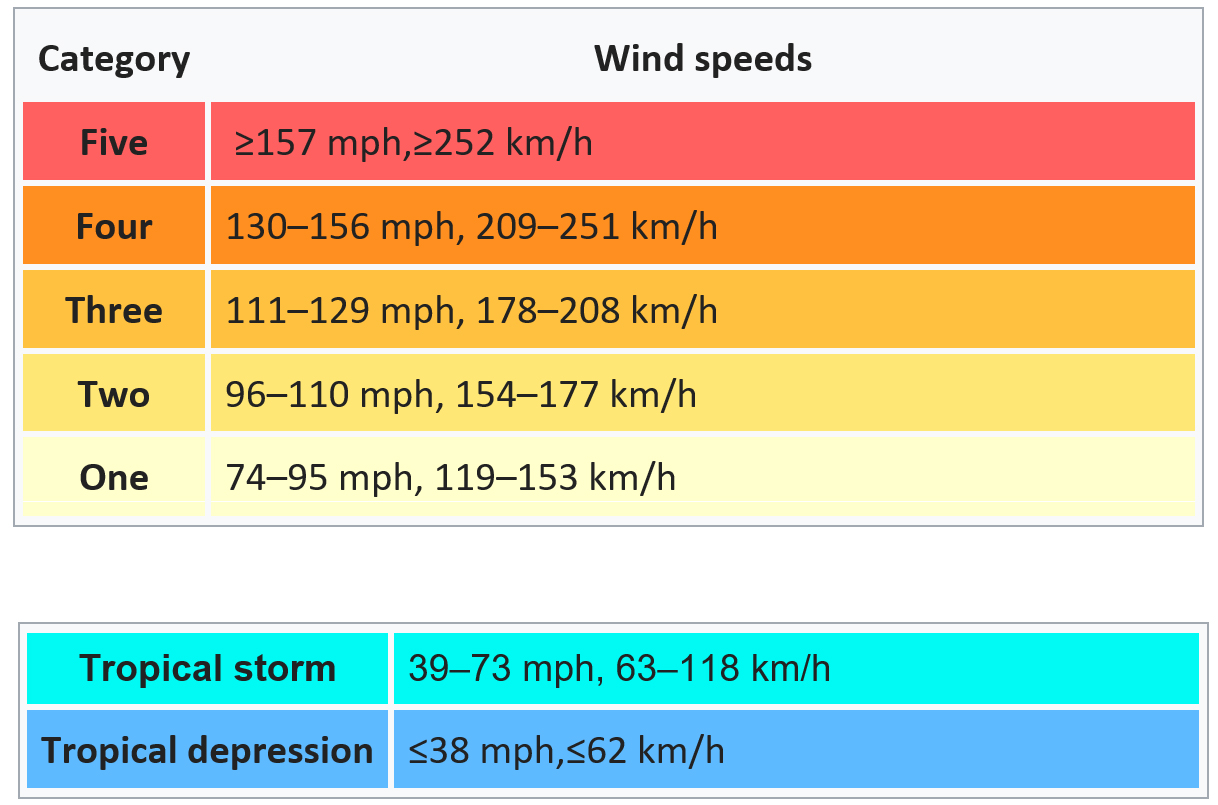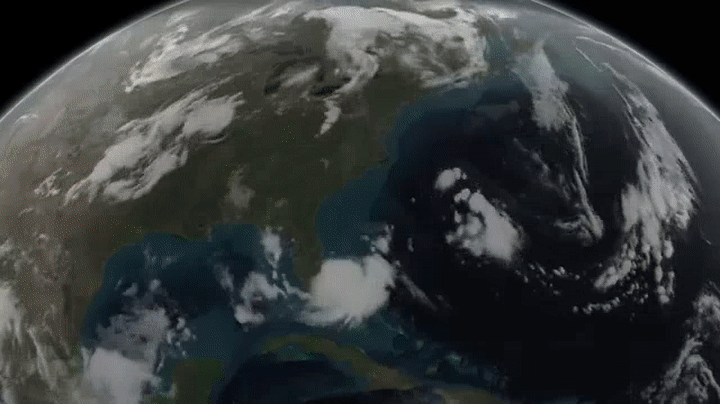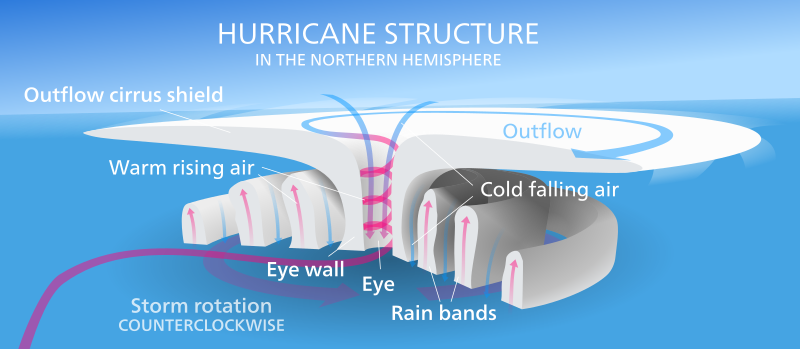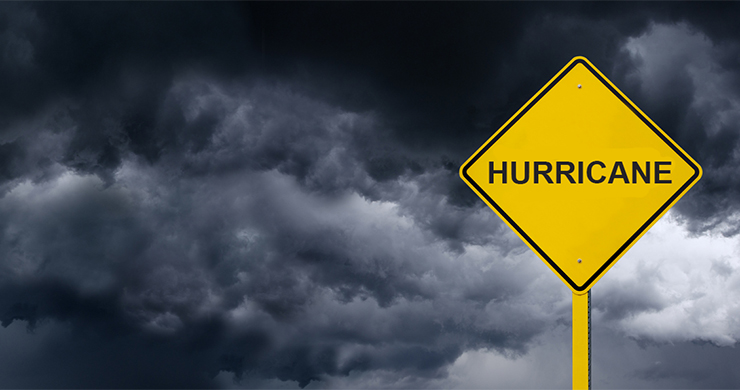Explaining Hurricanes
Hurricanes are tropical storms with wind speeds above 119 km/hr (74 mph).
Hurricanes are divided into 5 categories in the Saffir-Simpson scale.

Tropical storms form over warm ocean surfaces; normally at least 27˚C for a tropical depression to develop into a hurricane strength storm.
Warm ocean surfaces provide two things for the air above them:
- Heat
- Water Vapour
This is important as the heat warms the air and the air starts to rise.
However to really understand what goes on we need to know that there is two types of heat:
- Sensible Heat
- Latent Heat
Both of these provide the energy for a hurricane to form.

Image: Global tropical cyclone tracks-edit2 © Wikimedia Commons
Tropical Storm Tracks 1985-2005
The map above shows the tracks of tropical storms and hurricanes.
There is a band with virtually no storm tracks over the Equator.
This is because there is not enough Coriolis force (the spinning force of the Earth) close to the equator.
- To see the effect of Coriolis force watch water spinning down the plug hole.
The main things needed for Tropical Storms/Hurricanes are:
- Warm ocean surface temperatures (higher than 27˚C)
- Provides heat and water vapour.
- EnoughCoriolis force
- Normally not found within 500km of the Equator
Formation
1. As the air above a sufficiently warm sea surface warms and rises
2. Rising air forms lower air pressure – see linked article 2.
3. Air moves in from surrounding areas winds.
4. Coriolis force spins the moving air, water vapour and clouds.

Image: Typhoon saomai 060807 © Wikimedia Commons
5. The spinning pushes more air, water vapour and clouds into the centre where the storm gets stronger and stronger.
6. As long as the hurricane stays over warm water it will continue to get stronger.
Hurricanes lose strength if the move over land or cooler ocean areas.

Image: HurrArthur720p © Wikimedia Commons
7. Hurricanes form bands of clouds rotating around a central eye.
8. Inside the eye conditions are calm.
9. The strongest winds are found within the eye wall.

Image: Hurricane-en © Wikimedia Commons under the Creative Commons Attribution 3.0 Unported license
Hurricane Hazards
- Strong winds can damage buildings and can kill or cause serious injury.
- Rainfall can cause serious flooding.
- Storm surges:
Because of the low air pressure sea levels rise (less air pushing down on the sea surface)
The strong winds cause very big waves
Between these two flooding from the sea can be disastrous. The storm surge is often the most dangerous aspect of a hurricane.

Image: Hurricane Ike Gilchrist damage © Wikimedia Commons
Student Activity
- What things are necessary for a hurricane to form?
- Why does a hurricane lose strength:
a. If it passes over land?
b. If it passes over cooler seas?

